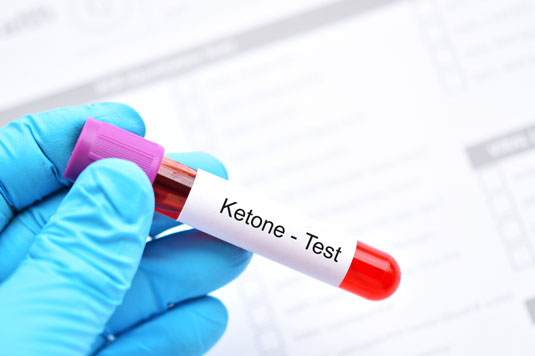If it’s your first time entering ketosis, you may be unsure of what to expect. Some people have symptoms that suggest ketosis, while others won’t notice any changes at all. The most common signs of ketosis for first-timers are headaches, fatigue, and muscle cramps (symptoms of the keto flu). Although unpleasant, this is a sign that you’re achieving your goal.
So, how will you know you’re in ketosis if you don’t have any symptoms? One common way to tell if you’re in ketosis is to use a ketosis urine test — it’s the same concept as the urine test women use to check if they’re pregnant, but instead you’ll find out if you’ve succeeded into getting into ketosis.
When you’re in ketosis, your urine will have a certain level of ketones (the products of fatty acids breaking down) that high-carb dieters won’t. This lets you know that you’ve reached your goal. These urine sticks are available online or at most quality nutrition stores.
You can also take a blood test to measure the same thing.
Knowing if you’re in ketosis helps you understand whether what you’re eating is correct and will give you confidence that you’re doing things correctly. It’s a great feeling to know that you’re on track to lose weight, become healthier, and reap all the other benefits of the keto diet.
The good news is that you can begin checking whether ketosis is taking place in your body only three days after starting the diet. Testing for ketosis can be done with the help of a few products.
Urinalysis testing to see if you're in ketosis
Ketone urinalysis test strips can help you quickly determine whether you’re in ketosis by testing for the presence of excess ketone bodies in your urine. The strips have a small pad which is dipped in a fresh urine specimen and changes color within a few seconds.Here’s how to perform a urine ketone test:
- Remove a test strip from the bottle and close the container immediately.
- While holding the end of the strip farthest away from the test pad, pass the test pad through your urine stream. If you prefer, you can collect your urine in a clean, dry container for testing. After collection, quickly dip the test pad into the urine. Drag the long edge of the test strip against the rim of the cup to remove excess urine.
- After 15 seconds, match the test pad to the color chart on the label on the bottle of test strips. Color chart blocks give approximate values; actual colors may be slightly darker or lighter than the color shown on the chart.
- Discard the used test strip.
You can purchase ketone testing strips over-the-counter at a local pharmacy, as well as online. Each bottle usually contains 100 to 200 test strips. Although urine test strips are relatively inexpensive (about 5 to 10 cents per strip), they’re also much less accurate than blood ketone meters.
Blood testing to see if you're in ketosis
Ketone blood test meters are another way to determine if you’re in ketosis by directly measuring your blood’s β-hydroxybutyrate ketone levels. ©By Jarun Ontakrai/Shutterstock.com
©By Jarun Ontakrai/Shutterstock.comHere’s how a blood ketone test works:
- Wash your hands with soap and dry them.
- Load a needle into the lancet, according to the directions provided.
- Insert a test strip into the meter.
- Place the lancet pen on your fingertip and push the button to draw a small drop of blood.
- Touch the strip to the drop of blood until it fills the opening.
- Check the meter for the reading and compare it to the legend provided. Results between 0.5 and 3 mmol/L indicate that you’re in nutritional ketosis.
- Dispose of the strip and lancet per the instructions provided.

